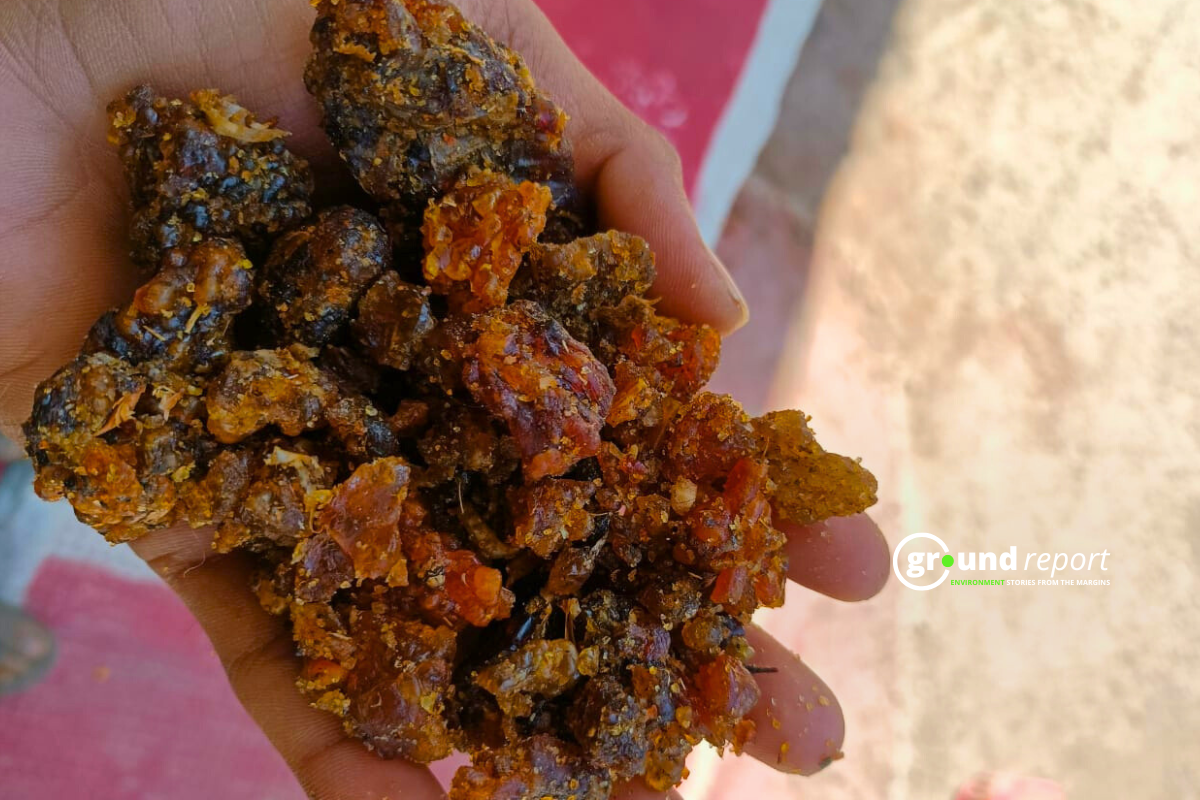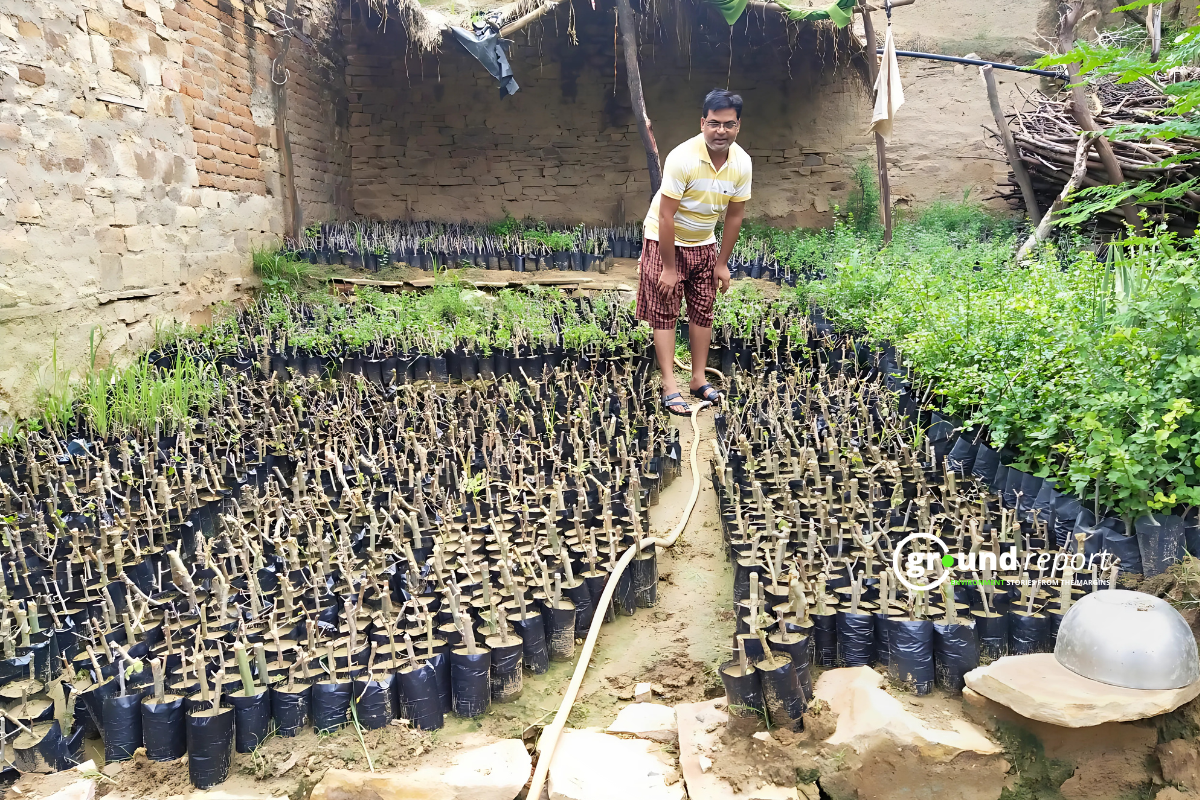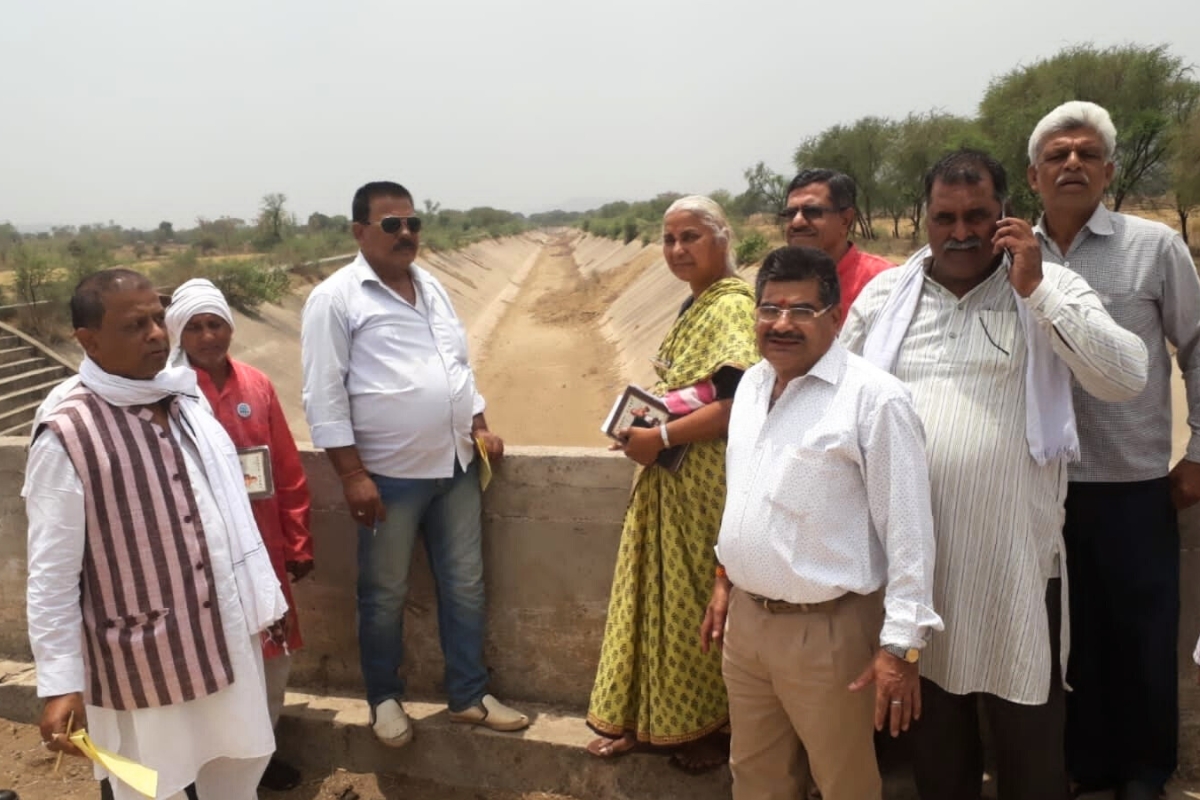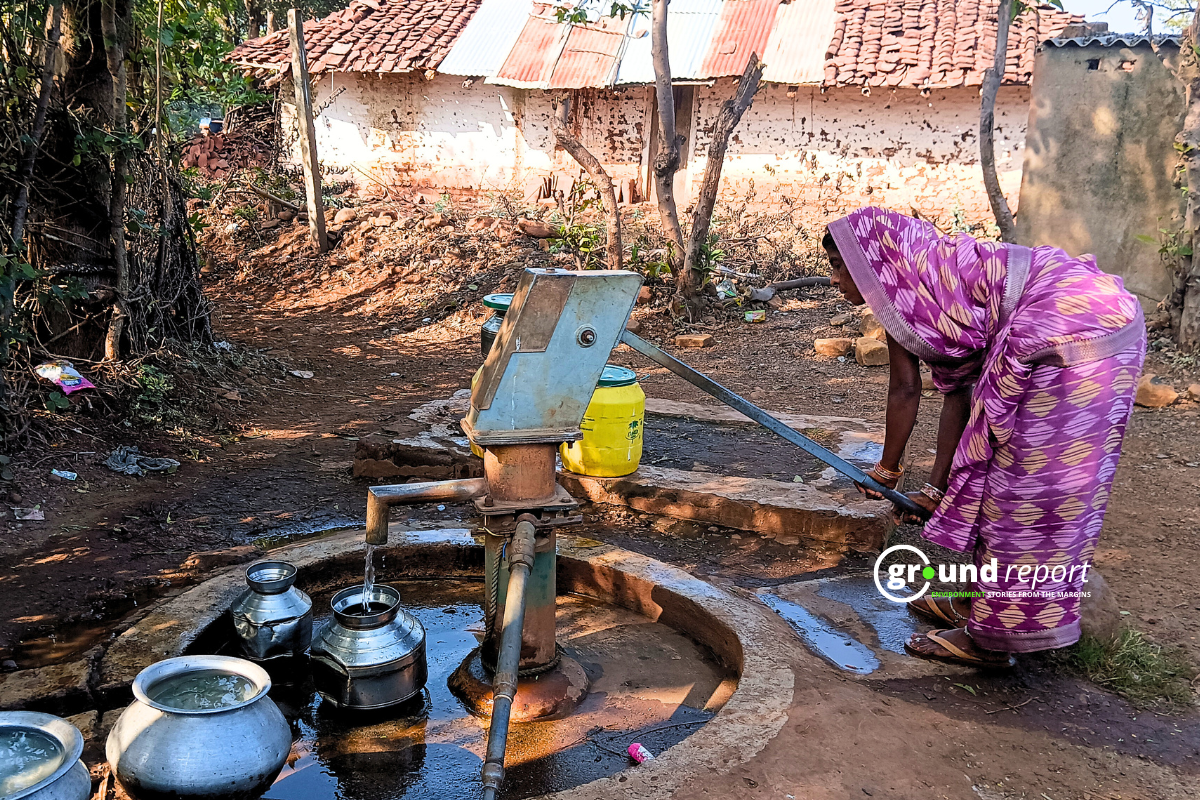Kalicharan Gurjar is a 50-year-old farmer from Deori village in the Morena district. He recalls the fear that troubled him five years ago when his land faced soil erosion problems. He was terrified of losing his 15 bighas of land to soil erosion caused by the expanding ravines, or beehad.
There is a continuous increase in soil erosion in the Chambal region, driven by decreasing vegetation cover and the region’s alluvial soil. A growing concern for farmers like him.
Gurjar’s village is situated 465 kilometers away from Bhopal, the capital of Madhya Pradesh. He shares how he worried his land would suffer the same fate as neighboring farmers whose fields had already been claimed by soil erosion.
However, an endangered plant came to his rescue. Guggal (Commiphora wightii), known for its ability to stabilize soil, especially in erosion-prone areas, proved to be the solution.
“I planted 1,000 saplings of Guggal along the boundary of my field to prevent further erosion. This has given me a two-fold benefit,” he shares.
Gurjar says that now not only has the soil erosion stopped in his field but he is also earning extra money by selling guggal gum (Indian myrrh) A yellowish gum-resin produced by the stem of the guggal tree (Commiphora spp.) The fragrant resin is used in traditional Ayurvedic medicine, incense, and perfumery.

Fighting soil erosion
Guggal is a flowering plant in the family of Burseraceae trees, which has drought-resistant and medicinal properties. It is mainly found in the UAE, India and the adjoining area of Pakistan. In India, this tree is mainly found in Rajasthan and Gujarat. But its trees are also found in small quantities in some areas of Madhya Pradesh and Maharashtra.
In dry regions, the plant’s deep root system taps into water sources underground, enabling its survival. This root network helps anchor the soil, preventing erosion.
The trunk of this tree, which remains without leaves for most of the year, is ash colored. It is a slow-growing plant that binds soil prone to erosion in dry and semi-arid areas. It also grows in sandy & silty loam soil and is also considered salinity resistant.
Thus, planting and protecting guggul prevents the ravine from spreading further, as well as providing livelihood opportunities for the local population.

This tree is famous for its resin or gum. Its gum, i.e. oleogum resin, is used medicinally. According to a joint research paper by researchers from IIT Guwahati and Banaras Hindu University, it is used in the treatment of inflammatory bowel disease (IBD), i.e. digestive diseases, ulcers, arthritis, cardiovascular disease and diabetes.
In this research, citing Sushruta Samhita, it has also been said to be used in the treatment of many serious diseases. However, Professor Ruitang Deng of the University of Rhode Island advocates more medical research for the medical authenticity of these claims in one of his research papers.
NB Brindavanam, consultant and researcher at Dabur Research and Development Center, associated with Dabur, a company that manufactures daily-use products, says that 6 species of guggal are found in the country. Unlike other species, Combiphoro wightii has a higher amount of a special compound E and Z sterone. Which is used to reduce cholesterol in the blood.

Guggal’s story of extinction
Guggal is in great demand in the market due to its medicinal properties. Due to which it has been exploited indiscriminately. Due to the high demand for oleo gum-resin, IUCN has placed it in its Red List.
The story of the extinction of Guggal in Chambal Valley is told to us by Piprai village elder Dwarka Singh. According to him, there used to be a lot of Guggal in Chambal Valley from Sheopur to Bhind. Recalling the year of 1972, he says,
“The state government had given contracts and leases to the dacoits who had surrendered in Jora and outside contractors to extract gum from Guggal. But to extract more resin or gum, they made cuts in Guggal using chemicals in the wrong way, due to which about 90 percent of Guggal of the valley was destroyed.”

Zakir Hussain of Sujagriti Samaj Seva Sansthan has been working for the conservation of Guggal since 2005. In 2008, he got the support of Moni Thomas, Principal Scientist of Jawaharlal Nehru Agricultural University. Thomas says that in those days, it was very difficult to enter the ravines of Chambal. In such a situation, walking in the ravines and searching for the remaining Guggal trees was a very tiring task.
According to Thomas’s analysis, people are extracting gum from Guggal in the wrong way. Actually, to extract gum, people make cuts on the trunk of the tree. This makes the wound in the trunk bigger, and the tree starts dying. Thomas says,
“Until we provide a scientific alternative, the exploitation of Guggal will continue in this way, and Guggal plants will keep getting destroyed.”
To solve this, he has made a device that does not cause a deep wound while making an incision in the tree and the tree does not die. He told people that the incision should be made in the branches instead of the main branch.
Another problem was that it was easy to plant this plant through cuttings (stem), but due to it being an arid region, this method was not successful in Chambal. In such a situation, he learned to extract and identify its correct seeds. After this, he grew the plants in the nursery and then started planting these plants.
Guggal conservation secures extra income
Gabbar Singh Bensala of Nebda village is a farmer by profession. But he also sells gum extracted from the Guggal tree. Sharing his experience, he says–
“Along with farming, there is also additional income from Guggal.”
This year, Bensala sold Guggal gum worth 50 thousand rupees. He shares that five years ago, he took training in extracting gum from Guggal from Sujagriti Samaj Seva Sansthan itself. After this, he extracts gum in a scientific way. The price of this gum in the market ranges from 1600 to 2000 rupees per kg.
Bensala says that planting guggal trees on the boundary of the field is beneficial rather than harmful in farming because it acts as a ‘natural farm yard’.

Mausammi, a woman from Piprai village, belongs to the Mogiya tribal community. Her family once led a nomadic life, constantly moving in search of livelihood. However, their lives have now taken a stable turn. They are engaged in Guggal plantation and resin extraction in the ravines, securing a steady source of income.
Similarly, Hussain Ali, a farmer of Jabrol village, has also planted a guggal nursery. He has prepared about 40 thousand plants. He says that he has earned an additional income of 8 lakh rupees by selling the gum extracted from it.
Zakir of Sujagruti claims that his organization has done 1.5 lakh guggal plantations in 185 hectares of the Chambal region. He says that the government should also pay more attention to it so that guggal can become a permanent source of livelihood for people and the drug manufacturing companies can also get pure guggal.
India’s domestic herbal industry is represented by 8610 licensed herbal units spread across the country. These herbal industries are dependent on the continuous supply of medicinal plants. Dr. JP Singh, owner of Shri Dhanvantri Herbal Company in Amritsar, says,
“There is a huge demand for guggal in the herbal market. Now, barely 10 percent of the guggal we are getting in the market is pure. Earlier we used to get guggal from Pakistan and Afghanistan, but now the trade from there is closed, so we have to get it via Dubai, which is very expensive.”
Dr. Singh is hopeful about the efforts being made for its conservation in Morena. He believes that with such efforts, he will also be able to get pure guggal.
The total demand for Guggul Gum in India is estimated to be 1,610 tonnes, but currently, only 10 tonnes of Guggul is extracted. The huge gap between demand and supply provides a great opportunity for people in Morena and other areas in Madhya Pradesh and the rest of India to increase their income by engaging in Guggul cultivation and resin extraction.
Edited by Diwash Gahatraj
Support us to keep independent environmental journalism alive in India.
Keep Reading
Erratic rainfall: Orange farmers and traders suffer in Pandhurna
Wadda Mal’s water woes: Families fight for survival amid crisis
Chhindwara’s maize-ethanol dream: promise vs reality
Soil Health Card: Ambitious scheme faces ground-level challenges
Follow Ground Report on X, Instagram and Facebook for environmental and underreported stories from the margins. Give us feedback on our email id greport2018@gmail.com.
Don’t forget to Subscribe to our weekly newsletter, Join our community on WhatsApp, and Follow our YouTube Channel for video stories






